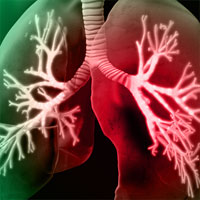Tag: analysis

5-Year Trends of Critical Care Practice and Outcomes
According to researchers in the U.S., analyses of patients, practices, and outcomes from a large geographically dispersed sample of adult ICUs revealed trends of increasing age and acuity, higher rates of adherence to best... read more

Association Between Survival and Time of Day for RRT Calls
Rapid response team activation is less frequent during the early morning and is followed by a spike in mortality in the 7 AM hour. These findings suggest that failure to rescue deteriorating patients is more common overnight.... read more

Endobronchial Ultrasound-guided Transbronchial Needle Aspiration
EBUS-TBNA is a safe procedure. The highest complication rate reported is 1.44%. Additionally, the scope damage could be encountered in 1.33% of cases and occasionally the TBNA needle could malfunction. The complications are... read more

COPD Patients Who Live Alone are Less Active
Patients with chronic obstructive pulmonary disease (COPD) who live with a spouse, partner, or other caregiver are more active than patients who live alone, and are also more likely to participate in pulmonary rehabilitation... read more

Safety Hazards During Intrahospital Transport
A prospective observational study. Data from participant observations of the intrahospital transport process were collected over a period of 3 months. Findings suggest that intrahospital transport is a hazardous process for... read more

Double Mortality Risk for Depressed Heart Disease Patients
Among 24,000 patients with heart disease studied over many years, those who suffered from depression were at twice the risk of dying, according recently published findings from Intermountain Healthcare. A statistical analysis... read more

Ventilation Rate During Adult CPR with Tracheal Tube
The optimal ventilation rate during cardiopulmonary resuscitation (CPR) with a tracheal tube is unknown. A new systematic review finds that a ventilation rate recommendation of 10 min-1 during adult CPR with a secure airway... read more

Effects of Polymyxin B Hemoperfusion on Mortality in Patients With Severe Sepsis and Septic Shock
Several studies have reported a survival benefit for polymyxin B hemoperfusion treatment in patients with severe sepsis and septic shock. However, recently, a propensity-matched analysis and a randomized controlled trial... read more

Effectiveness and Safety of Magnesium Replacement in Critically Ill Patients Admitted to the ICU
Rules of thumb for the replacement of electrolytes, including magnesium, in critical care settings are used, despite minimal empirical validation of their ability to achieve a target serum concentration. This study's... read more

Should All Massively Transfused Patients Be Treated Equally?
Although balanced resuscitation has become integrated into massive transfusion practice, there is a paucity of evidence supporting the delivery of high ratios of plasma and platelet to RBCs in the nontrauma setting. This... read more

Frequency of Exacerbations in Patients with COPD
Present treatment strategies to stratify exacerbation risk in patients with chronic obstructive pulmonary disease (COPD) rely on a history of two or more events in the previous year. We aimed to understand year to year variability... read more

Intubation During CPR was Associated with Worse Survival and Brain Health
Intubating patients in cardiac arrest is widely considered ideal care. But in this analysis, the patients who were intubated were less likely to survive (16% vs 19%) or have a good functional outcome (~11% vs ~14%). Intubation... read more

I’m your Anesthesiologist. Let me explain what that means
Anesthesiologists are the guardian angels of the operating room. Their primary purpose is to keep you alive so you can undergo whatever procedure you need. While we may only meet you shortly before we take you to the operating... read more

A population-based cohort study of rheumatoid arthritis-associated interstitial lung disease
ILD is a serious complication in RA, with a significantly increased mortality compared with a large matched cohort of RA comparisons without ILD. Mortality risks were assessed using Kaplan-Meier mortality curves, and hazard... read more








